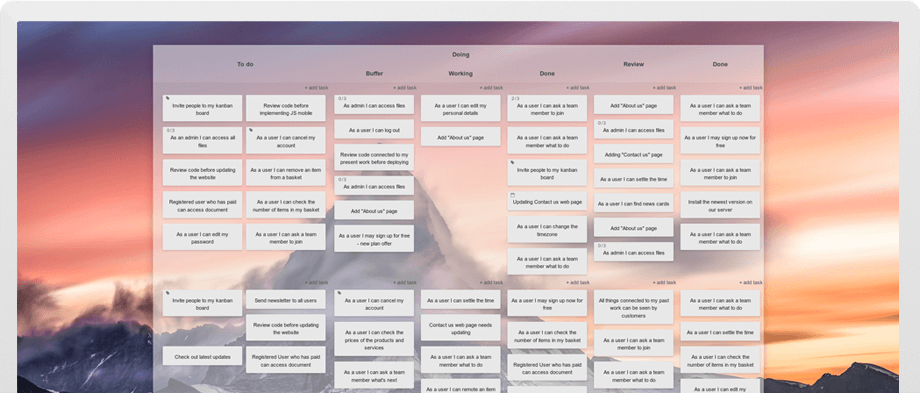The habit of procrastination plagues us all, leaving tasks lingering in the shadows of our to-do lists and minds. Today, we will not be trying to find satisfying answers to why we procrastinate - we do it because we don't want to deal with the tasks that face us - it's as simple as that. Instead, let's tackle this wasteful habit head-on by looking into practical strategies to combat procrastination and enhance productivity.
1: Minimize decision-making
Set yourself up for success by limiting how many decisions you make each day, starting with what to have for breakfast and ending with which task to tackle first at work. One approach to minimizing decision-making is planning everything, e.g., what you'll wear to the office or where you'll have lunch. You can further simplify it by creating a rotation of pre-set choices, e.g., a menu of two possible breakfasts or two office suits to select from. In the end, a choice between two options can always be made with a coin toss.
However - regarding the less banal choices - it might be best to leave the decision-making to an objective difficulty score, priority level, or due date. If you organize your work tasks as visual cards and give them size & urgency values, and priority levels upon creation, the question of where to start will become as simple as sorting the tasks by these traits.
The bottom line is the fewer decisions you have to take, the less energy and motivation you'll spend on non-crucial activities.
2: Break work into bite-size actions
Divide daunting tasks into manageable chunks - pieces that appear simple and doable, as opposed to the potentially abstract and monumental goal they're a part of. Creating a more approachable view of your workload minimizes intimidation and sets shorter, achievable deadlines, fostering a sense of accomplishment with each step completed. The same logic can apply to building a tree-like hierarchy of your action item's sub-tasks and can help you maintain an efficient flow.
3: Get set for accountability
External accountability can catalyze progress. Sharing your work plans and real-time progress with others will fuel your motivation to stay on track toward achieving your objectives - and to do so in good time. Using a shared Scrum or Kanban board is an example of a public commitment to reaching specific goals in a set timeframe. Moreover, when working as a team, displaying the entire process for all team members to see, rather than siloing individual work, fosters collaborative efforts towards a common and clear goal.
4: Eliminate distractions
Minimizing distractions is increasingly difficult in a world where we're trained to constantly redirect attention. Consider designating specific periods during the day for uninterrupted work with all devices and notifications disabled. If not possible, at least learn to complete the action you're focused on before you move to tend to the distraction and keep a score of where you've left off.
5: Use tools built for productivity
Leverage software created in mind with workflow management, allowing you to track and trace your steps with as little effort as possible. Software made for that purpose is Kanban Tool - a versatile platform aiding in task management, current and repeat workload planning, and fostering collaboration. Its features facilitate breaking tasks into small chunks, setting priorities, due dates, task difficulty, and integrating seamlessly with other tools, further aiding productivity.
6, Bonus: Trick yourself!
Have you ever noticed that the time we spend procrastinating exceeds the time we end up needing to complete the dreaded work? It's worth keeping in mind whenever you find yourself putting something off. Especially when you consider that the motivation to keep at it more often arises after you started the work than before (as suggested by this now-famous preliminary study. The awareness of how this works - i.e.: there is a reward approaching once you've begun to tackle the task, which then breeds motivation to carry on - this understanding alone could be enticing enough for you to keep procrastination to a minimum. In other words, it lets you know that the lack of interest and will to do the task will dissipate once you get going.
Furthermore, if you're into games, you could turn daunting, boring, or unrewarding tasks (all of which traits tend to cause us to put the work off) into a game. How fast can you churn out the monthly sales summary? How many words per minute can you squeeze when typing a quarterly report, and so on. The trick is to turn the offputting characteristic of a task into its gamifying element. You can also trade with yourself that, e.g., for every 20 minutes of intense work on an uninspiring task, you get 3 minutes of social media scrolling, looking out the window, or playing a game on your smartphone.
Visualize your work with Kanban Tool
Begin your journey towards increased productivity and minimized procrastination today. Embrace organization, prioritize effectively, and harness the right software to transform your work habits, finally taking charge of your time and achieving consistent progress. Try Kanban Tool today to unlock the potential of a more organized, enjoyable work life!



